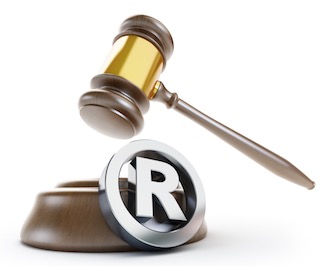 The Court of Appeals for the Federal Circuit (the “Federal Circuit”), sitting en banc, upended § 2(a) of the Lanham Act last month, holding that the 70-year-old statute barring registration of disparaging trademarks violates the First Amendment. See In re Simon Shiao Tam.
The Court of Appeals for the Federal Circuit (the “Federal Circuit”), sitting en banc, upended § 2(a) of the Lanham Act last month, holding that the 70-year-old statute barring registration of disparaging trademarks violates the First Amendment. See In re Simon Shiao Tam.
The road to the Federal Circuit began when Simon Tam tried to register the name of his band, THE SLANTS, with the United States Patent and Trademark Office. Section 2(a) bars registration of a mark that “comprises immoral, deceptive, or scandalous matter; or matter which may disparage . . . persons, living or dead. . . .” Citing § 2(a), the examiner refused registration after determining that the mark was likely to disparage persons of Asian descent because the term had “a long history of being used to deride and mock a physical feature.”
Tam appealed to the Trademark Trial and Appeal Board (the “Board”), but the Board affirmed the Trademark Examiner’s refusal to register the mark. The Board found that although THE SLANTS has several meanings, the record demonstrated that it was “abundantly clear” that the likely meaning of the mark referred to people of Asian descent. Mr. Tam again appealed, this time to the Federal Circuit, arguing that § 2(a) is unconstitutional.
The first time around, the Federal Circuit agreed with the Examiner and the Board, affirming the decision to bar registration of the mark. The Federal Circuit said that the Asian imagery on the band’s website, past interviews given by Tam in which he explained that he chose the band’s name precisely because it was a derogatory term, and other unrebutted evidence showed that the mark refers to people of Asian descent. Moreover, the Federal Circuit held that a substantial composite of people of Asian descent would find the mark disparaging.
As for the constitutionality of § 2(a), the Federal Circuit refused to address the issue, holding that binding Federal Circuit precedent foreclosed Tam’s constitutional arguments. That binding precedent, In re McGinley, is a decision of the Federal Circuit’s predecessor, the United States Court of Customs and Patent Appeals (the “CCPA”). In McGinley, the CCPA held that refusal to register a mark under § 2(a) does not bar an applicant from using the mark, and therefore the First Amendment is not violated.
In a rare procedure, the Federal Circuit sua sponte ordered a rehearing en banc to review the constitutionality of § 2(a). Upon rehearing en banc, the Federal Circuit overturned McGinley in its 9-3 decision.
The Federal Circuit declared that the McGinley analysis “was cursory, without citation to legal authority, and decided at a time when the First Amendment had only recently been applied to commercial speech.” The Federal Circuit explained that not only iss § 2(a) a content-based regulation of speech, but it is also a viewpoint-based regulation of free speech, and therefore strict scrutiny applied.
Facing strict scrutiny, the government’s arguments fell flat. The main arguments, namely, that the government should be able to dissociate from “vile racial epithets and images” and § 2(a) is viewpoint neutral because it does not eliminate particular viewpoints, only particular words, were summarily rejected by the Federal Circuit. The Federal Circuit explained;
Section 2(a) does not treat identical marks the same. A mark that is viewed by a substantial composite of the referenced group as disparaging is rejected. It is thus the viewpoint of the message conveyed which causes the government to burden the speech. This form of regulation cannot reasonably be argued to be content neutral or viewpoint neutral.
The Federal Circuit concluded that the government’s arguments were not sufficient to survive strict scrutiny.
The traditional argument (and the one relied on in McGinley) for § 2(a) – that the First Amendment is not implicated because registration refusal does not prohibit speech – was also rejected. First, the Federal Circuit noted that “the First Amendment’s standards, including those broadly invalidating message discrimination, are not limited to such prohibitions.” In contrast, the Federal Circuit explained, the First Amendment is threatened when speech is chilled, and the denial of a benefit like federal registration of a trademark, chills speech because a person is penalized for their speech.
The Federal Circuit also posited that the highly subjective nature of what constitutes a disparaging trademark, and the inconsistent application of § 2(a) to similar, or in some instances the same mark, could possibly render § 2(a) void for vagueness. The Federal Court did not go so far, but it did conclude that such uncertainty contributed to the chilling effect on speech.
Importantly, the Federal Circuit also held that trademark registration is not government speech, and therefore outside the coverage of the First Amendment. The Federal Circuit explained that the notion that a trademark represents government speech is antithetical to the requirement that a trademark identify the source of the goods or product. The government argued that the ® symbol, the mark’s placement on the Principal Register, and the issuance of a certificate of registration amounted to government speech.
The Federal Circuit found the government’s arguments “meritless,” explaining that “when the government registers a trademark, the only message it conveys is that a mark is registered.” This, the Federal Circuit held, is regulatory activity, not speech.
The government also argued that the trademark registration is a government subsidy and that therefore the government is free to restrict speech within the trademark program. After a long discussion, the Federal Circuit also rejected this position, stating that to accept such an argument would be to “expand the ‘subsidy’ exception to swallow nearly all government regulation.”
Having rejected all of the government’s arguments, the Federal Circuit held that § 2(a)’s disparagement provision is an unconstitutional violation of the First Amendment.
Although this decision is not the final word on the constitutionality of § 2(a), Federal Circuit precedent, especially as it pertains to the Lanham Act, is usually persuasive. The federal circuit courts follow the McGinley precedent, and it will be interesting to see whether the federal circuit courts will adopt the Federal Circuit’s rejection of its own precedent.
The Fourth Circuit will likely be the first to weigh in as it considers the Washington Redskins’ appeal of the District Court’s decision to uphold the Board’s cancellation of six of the team’s trademarks on the grounds that the marks disparage Native Americans. The constitutional arguments used by Washington and rejected by the Eastern District of Virginia are nearly identical to the positions adopted by the Federal Circuit in Tam. If the Fourth Circuit affirms the District Court, it will set the stage for the Supreme Court to resolve the split, and decide once and for all the constitutionality of § 2(a).

![[IPWatchdog Logo]](https://ipwatchdog.com/wp-content/themes/IPWatchdog%20-%202023/assets/images/temp/logo-small@2x.png)


![[Advertisement]](https://ipwatchdog.com/wp-content/uploads/2024/04/Patent-Litigation-Masters-2024-sidebar-early-bird-ends-Apr-21-last-chance-700x500-1.jpg)

![[Advertisement]](https://ipwatchdog.com/wp-content/uploads/2021/12/WEBINAR-336-x-280-px.png)
![[Advertisement]](https://ipwatchdog.com/wp-content/uploads/2021/12/2021-Patent-Practice-on-Demand-recorded-Feb-2021-336-x-280.jpg)
![[Advertisement]](https://ipwatchdog.com/wp-content/uploads/2021/12/Ad-4-The-Invent-Patent-System™.png)







Join the Discussion
No comments yet.